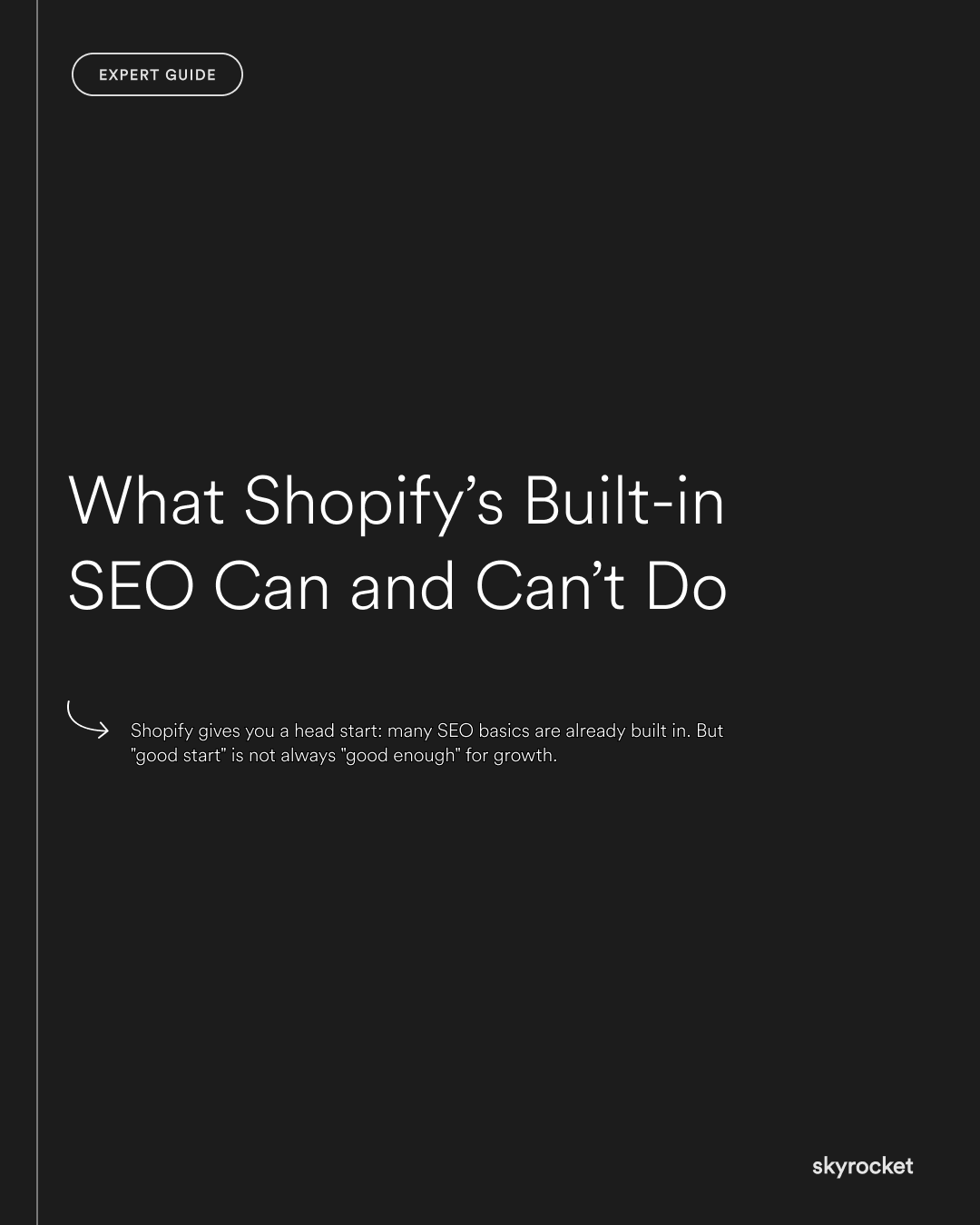You run a successful small or medium business in NZ. You’ve built or set up your Shopify store. Traffic’s okay, but growth seems to hit a ceiling. Your competitors show up ahead of you on Google searches you know you should be able to win. Or you’ve invested in ads and social but organic search feels neglected.
That’s a problem. Because once you’ve got good products, decent design, and good UX, the difference between ranking on page 2 versus page 1 of Google can mean thousands more visitors, more trust, and more sales with lower ongoing ad spend.
Shopify gives you a head start: many SEO basics are already built in. But "good start" is not always "good enough" for growth. Knowing where Shopify covers you versus where you’ll need extra work makes the difference between plateauing in traffic or climbing steadily.
Why this matters in business terms
If your SEO is strong:
- You rely less on ads to bring in new customers
- You get compounding traffic over time from good content
- Your brand appears more credible in search results
- You create a smoother experience for mobile shoppers
If SEO is weak or neglected:
- You spend more to acquire every customer
- You miss easy wins your competitors are taking
- You risk showing up with broken links or slow pages
- Your content efforts struggle to gain traction
Key Tip: Don’t assume Shopify’s canonical tags fix all duplicate content. Even though Shopify includes canonical tags, many themes, filters, pagination and variant setups still generate duplicate URLs that Google indexes. If you let those multiply, you dilute your SEO value and lose simple "free" gains.
What Shopify Can Do (Built-in Strengths)
These are the parts Shopify handles well, out of the box. For many businesses, these features cover all you need for basic SEO.
1. Automatic sitemap and robots.txt generation
Shopify builds your sitemap.xml automatically, updates it when you add or remove products or pages. The robots.txt file is managed for you, so search engines know what to crawl or not.
2. SSL (HTTPS) by default
Shopify ensures your site is secure. This helps with both customer trust and Google's ranking signals.
3. Mobile-friendly themes
Most Shopify themes are responsive, which supports mobile shoppers and search performance.
4. Editable title tags, meta descriptions, alt text
You can set SEO metadata for products, collections and pages. These are critical fields for search visibility and click-through rates.
5. Canonical tags for basic duplicate control
Shopify uses canonical tags to guide Google to the preferred version of a page. This reduces risk of duplicated content in some common cases.
6. Speed optimisations through hosting
Shopify’s infrastructure handles caching, CDN delivery, and core page load performance so you don’t have to configure it yourself.
What Shopify Can’t Do (Where You’ll Hit Limits)
These are the gaps to be aware of. If you want to scale traffic or rank for more competitive terms, you’ll likely need to go beyond what Shopify handles out of the box.
1. Fixed URL structure
Shopify forces certain parts in your URLs like /products/ or /collections/. You can change the slug part (after that), but you can’t customise the whole path.
2. Duplicate content from variants, filters and tags
Even with canonical tags, variant URLs, filtered collections and tags can create multiple URLs with nearly identical content.
3. Limited access to robots.txt and sitemap files
You can make some edits, but you don’t get full control. That limits how precisely you can manage crawling or indexing.
4. Rich snippets and structured data are theme-dependent
If your theme doesn’t include support for structured data (like product reviews, FAQs), you may need an app or custom code to add it.
5. Blogging limitations
Shopify’s blog is simple. It works for basic posts, but if you want complex layouts, filtering or categorising posts, you’ll hit walls.
6. Performance issues from apps and themes
Some themes and third-party apps add scripts or features that drag down your load time. That hurts mobile performance and, eventually, SEO.
7. Scaling or complex SEO setups need extra tools
If you're running a large store, selling in multiple countries, or want highly customised templates or SEO logic, you’ll need developer help or external apps.
What You Can Do (Practical Actions)
Audit your current SEO baseline
- Use tools like Google Search Console and PageSpeed Insights
- Identify which pages are slow, duplicate, or underperforming
- Check for missing metadata and broken links
Fix what Shopify lets you control
- Write unique title tags and meta descriptions for each page
- Compress images and add helpful alt text
- Clean up unnecessary apps or third-party scripts
- Add internal links between blogs, products, and collections
Address duplicate content issues
- Use canonical tags carefully and check their implementation
- Avoid excessive tagging and overlapping collections
- Redirect old or removed pages properly to avoid 404s
Improve site performance
- Switch to a faster theme if yours is bulky
- Remove heavy apps that slow down your site
- Use lazy loading and compressed image formats like WebP
Create valuable content
- Write FAQs, blog posts, and guides that answer customer questions
- Target local or niche keywords (e.g. "leather bags NZ")
- Encourage reviews and testimonials to build trust and content
Addressing Objections
"Can’t we just tweak our theme?"
A few tweaks help, but they won’t fix structural problems like duplicate URLs, slow load times or missing metadata.
"Isn’t Shopify SEO good enough?"
For basic use, yes. But if you want to outrank competitors or scale traffic, you’ll need to push beyond the built-in tools.
"Aren’t SEO apps enough?"
Apps can help, but too many can slow your site. Focus on fixing issues at the source before layering tools.
"Is content really necessary for product stores?"
Yes. Blogs and guides help attract organic traffic, improve conversion, and build authority. They're not just for service businesses.
Example: NZ Store Case Study
An Auckland-based retailer selling outdoor gear used a beautiful theme with heavy scripts. Their product descriptions were copied from manufacturers, and they had hundreds of tags and overlapping collections.
After a quick audit, they removed duplicate tags, rewrote metadata, optimised images and switched to a lighter theme. They also started publishing useful content like "How to choose a hiking pack in NZ conditions."
In three months, organic traffic improved by 40%, and bounce rate dropped by half on mobile.
What to Do Now
- Run a basic audit: check metadata, speed, and duplicate content
- Clean up your top product and collection pages
- Streamline apps and theme scripts to improve load times
- Start a small blog or resource section with helpful articles
- Track changes with Google Search Console to see gains over time
If you’re not sure where to start or need a second set of eyes, reach out. We’re happy to help you find what’s holding your store back.



